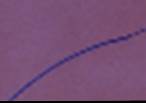


The Automatic Triangulation dialog appears when the Automatic Surfacing/Triangulation... item is chosen from the Surface Tools Create Tab.
This function can work with either selected points (you select them before bringing up this dialog) or with all points in a project. If no points are selected when this dialog appears, then the "Only selected points" and 2D options will not be available. You can choose which types of points to include (by checking imported points, offsets, SmartPoints checkboxes), and limit to a specified layer (by selecting a layer in the layer dropdown selector) in the triangulation routine.
There are three different triangulation types for:
• 2D - the selected points are 2D Marked Points on a photograph on a flat plane that is close to being parallel to the image plane.
• 2.5D - the points are 3D and describe a two and a half dimensional shape (think of a rubber sheet on the floor with various objects underneath it stretching it up off the floor in places).
• 3D - the points are 3D and describe a solid convex shape (with no concave sections).
Not often will the whole project fall into any one of these three categories. You can proceed by either selecting the points anyway, triangulating them and then deleting the incorrect triangle surfaces or you can select sub-sets of the points that do meet these descriptions.
You can undo the creation of the surfaces by using Undo tool on Quick Access Toolbar (or Ctrl-Z).
To surface a flat object with many points (such as the front of a building with many window and door corners marked):
• Open the photograph showing the points.
• Using the select area tool (or any other selection mechanism) select all the points to have surfaces drawn between.
• Open the Automatic Triangulation Dialog.
• Press the OK button (because all the defaults should be correct for this operation).
• The surfaces will be created and will appear on the photograph between all the selected points.
• If the shape of the points was not purely convex in 2D you may need to delete some extraneous surface triangles around the edges.
To surface a 2.5 D "rubber sheet" object (such as a sheet metal part):
• Assuming the whole project is the one object, open the Automatic Triangulation Dialog.
Since no points are selected the defaults will be "All points" and "2.5D".
• Press the OK button.
Surfaces will be created between all 3D Object Points in the project based on the best fit plane 2D triangulation.
To surface a 3D convex object (such as the upper or lower block of the Toy Blocks tutorials):
• Open a Point Table, 3D Viewer or Photograph.
• Select the points on the part of the object that is purely convex.
• Open the Automatic Triangulation Dialog.
• Select the "3D - convex hull" option.
• Press the OK button.
The surfaces will be created and will appear on the photographs and 3D Viewers between all the selected points.
• If the shape of the points was not purely convex in 3D you may need to delete some extraneous surface triangles around the edges.